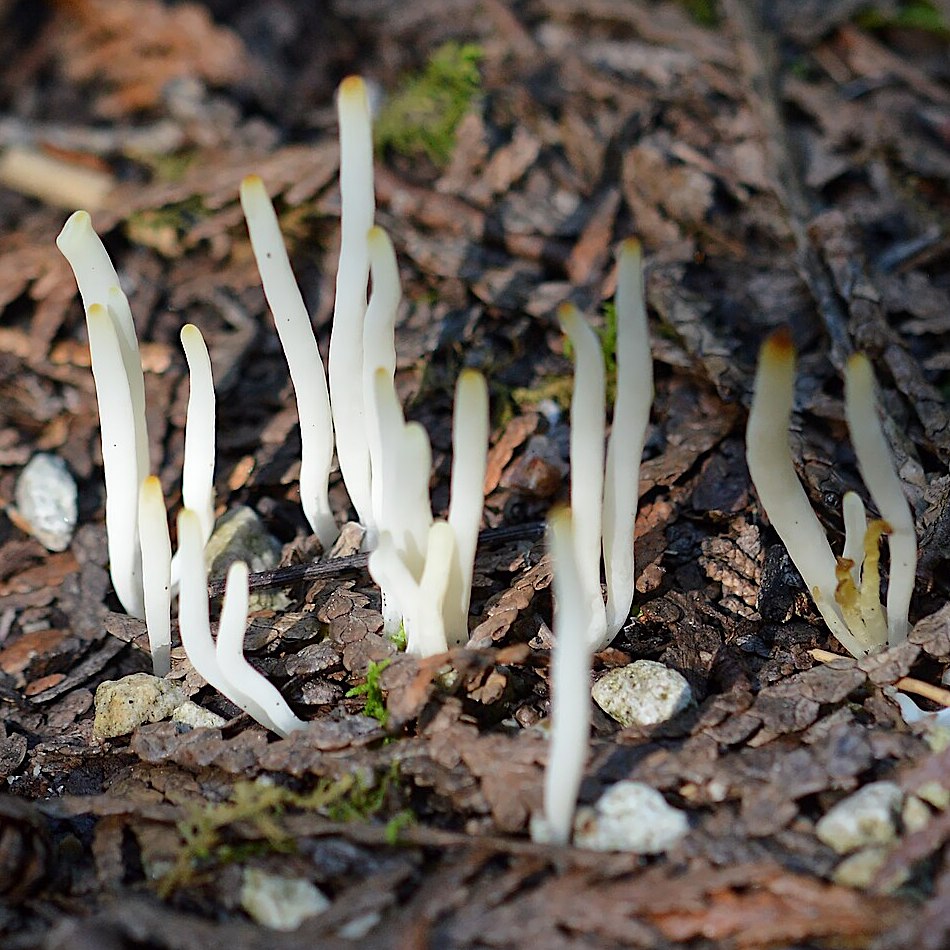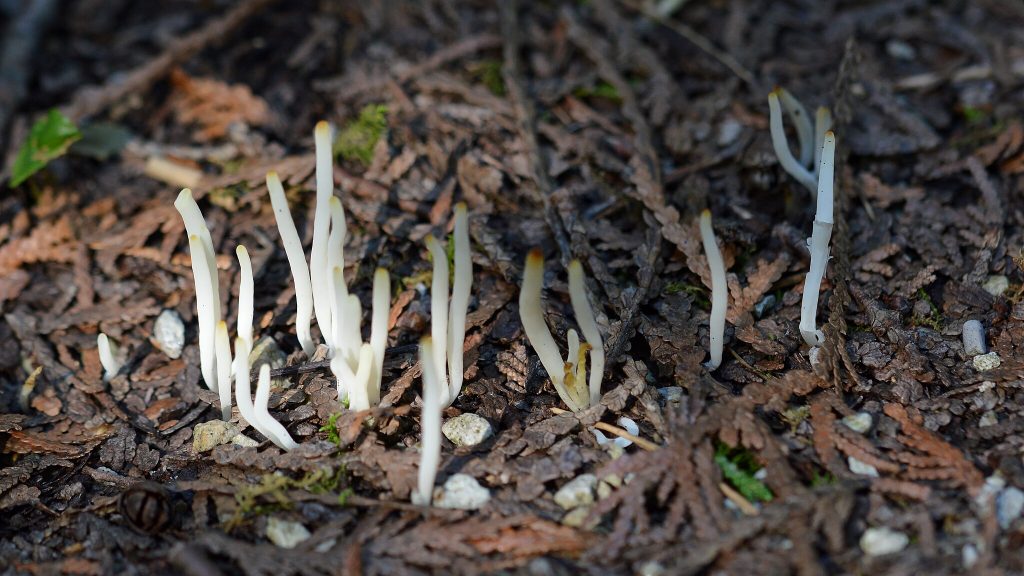
In autumn, Fairy Fingers delicately probe their way through grassland and woodland litter.
Photo: Ryan Hornett CC BY-SA 4.0, via Wikimedia Commons
Scientific name: Clavaria fragilis (synonymous with C. vermicularis)
Other common names: White Worm Coral, White Spindles
What to look for:
• Appearance: Small groups of white, slender, unbranched fruiting bodies, which are initially circular in cross-section, becoming flatter and grooved with age. The tip may also yellow with age. Up to 15 cm tall.
• Spores: White spore print.
• Where: Unimproved grassland, or woodland, across the Northern Hemisphere.
• When: Autumn.
• Similar species: Other Clavaria species.
In the damp autumn weather, clusters of ethereal ‘fairy fingers’ twist their way upwards on unimproved grasslands or among the fallen leaves in woodland. A fairly common species of club mushroom across Europe, Clavaria fragilis, as its scientific species name suggests, is brittle, easily breaking when handled. It is a saprobic species, meaning it gains its nourishment from dead or decaying organic matter.
Did you know…?
…Fairy Fingers are edible, but have very little flavour.

More information and references:
Buczacki, S., Shields, C., Ovenden, D., 2012. Collins Fungi Guide. Collins, London.
Published: October 2016
Author: Amanda Scott
Photos: Ryan Hornett CC BY-SA 4.0, via Wikimedia Commons
